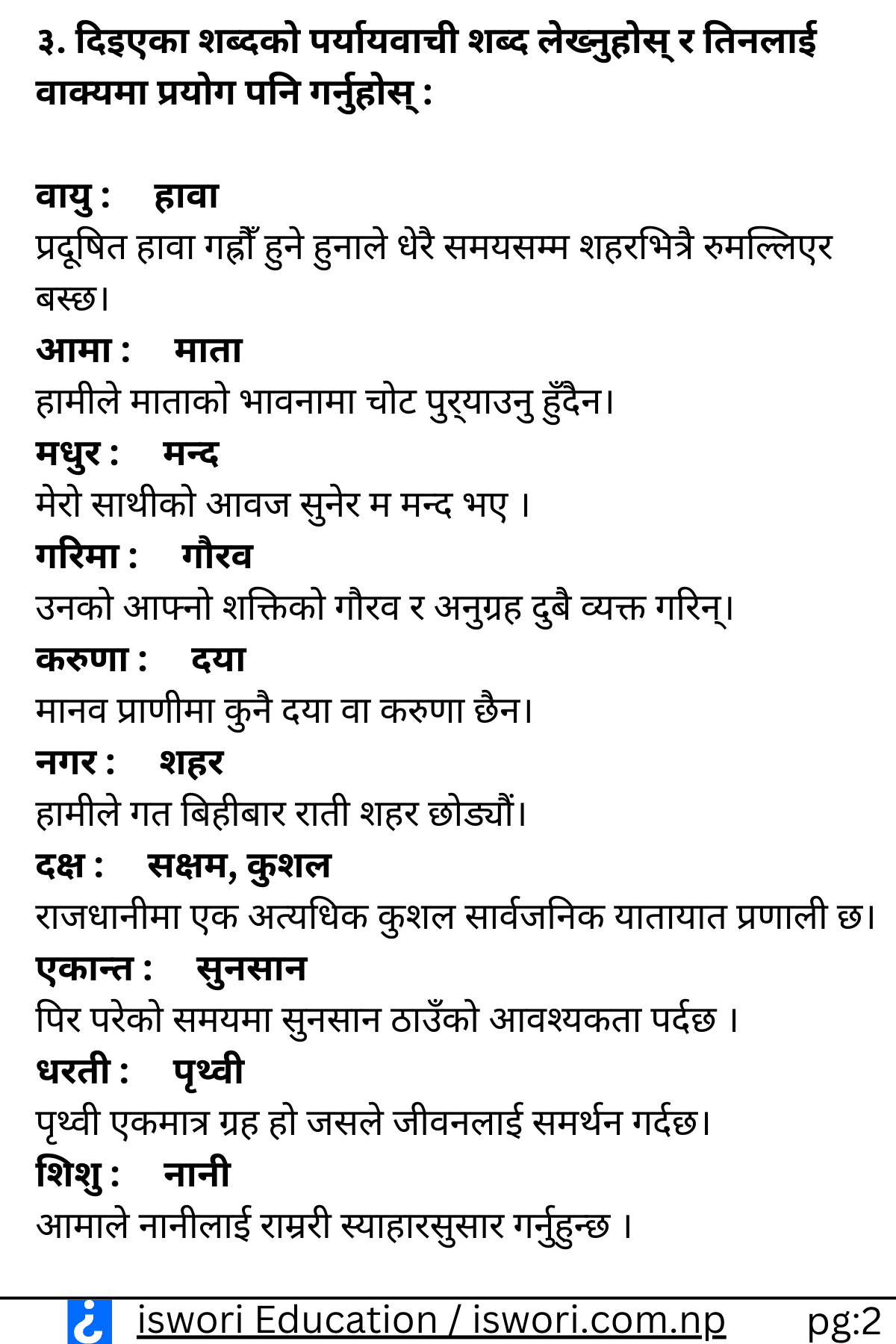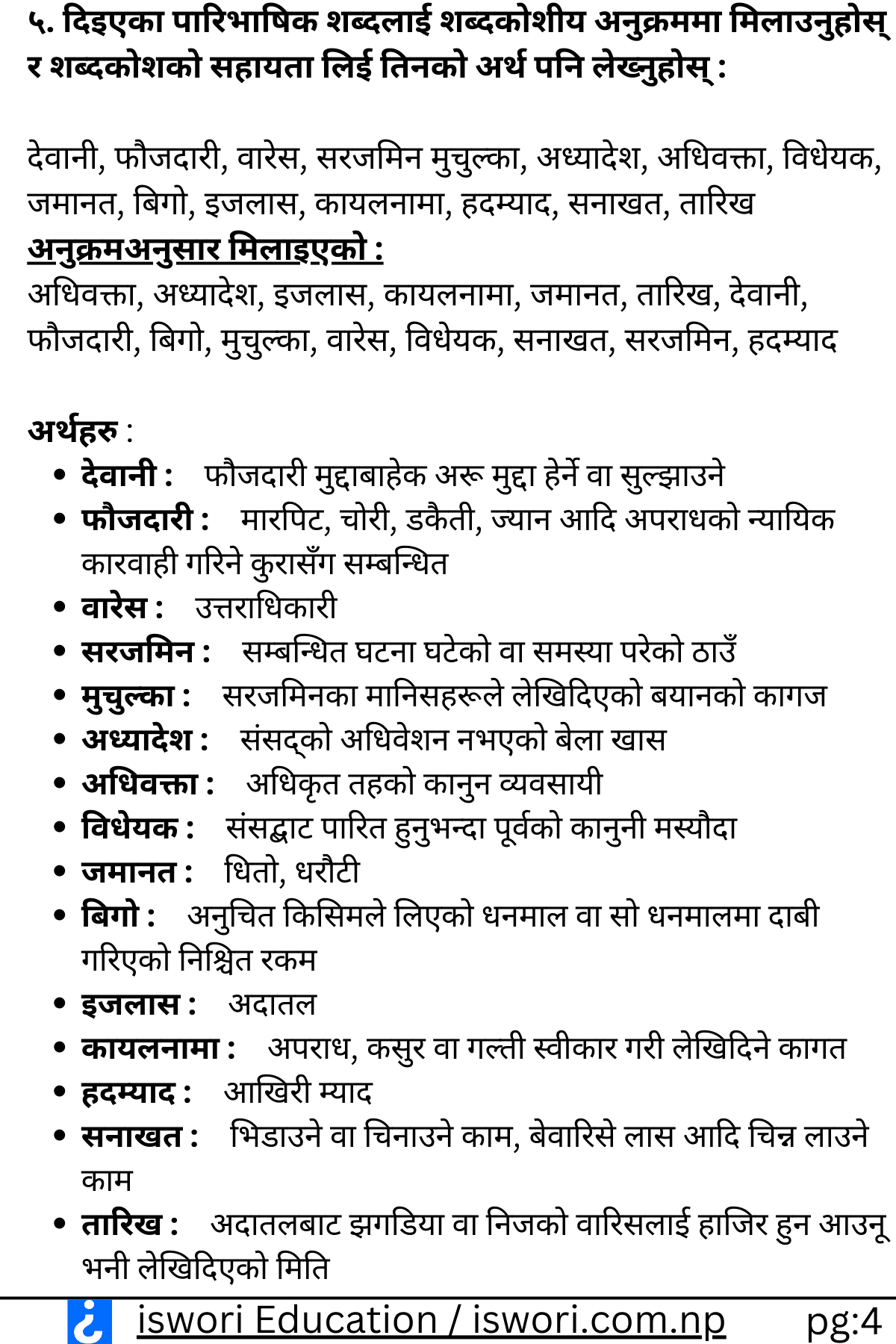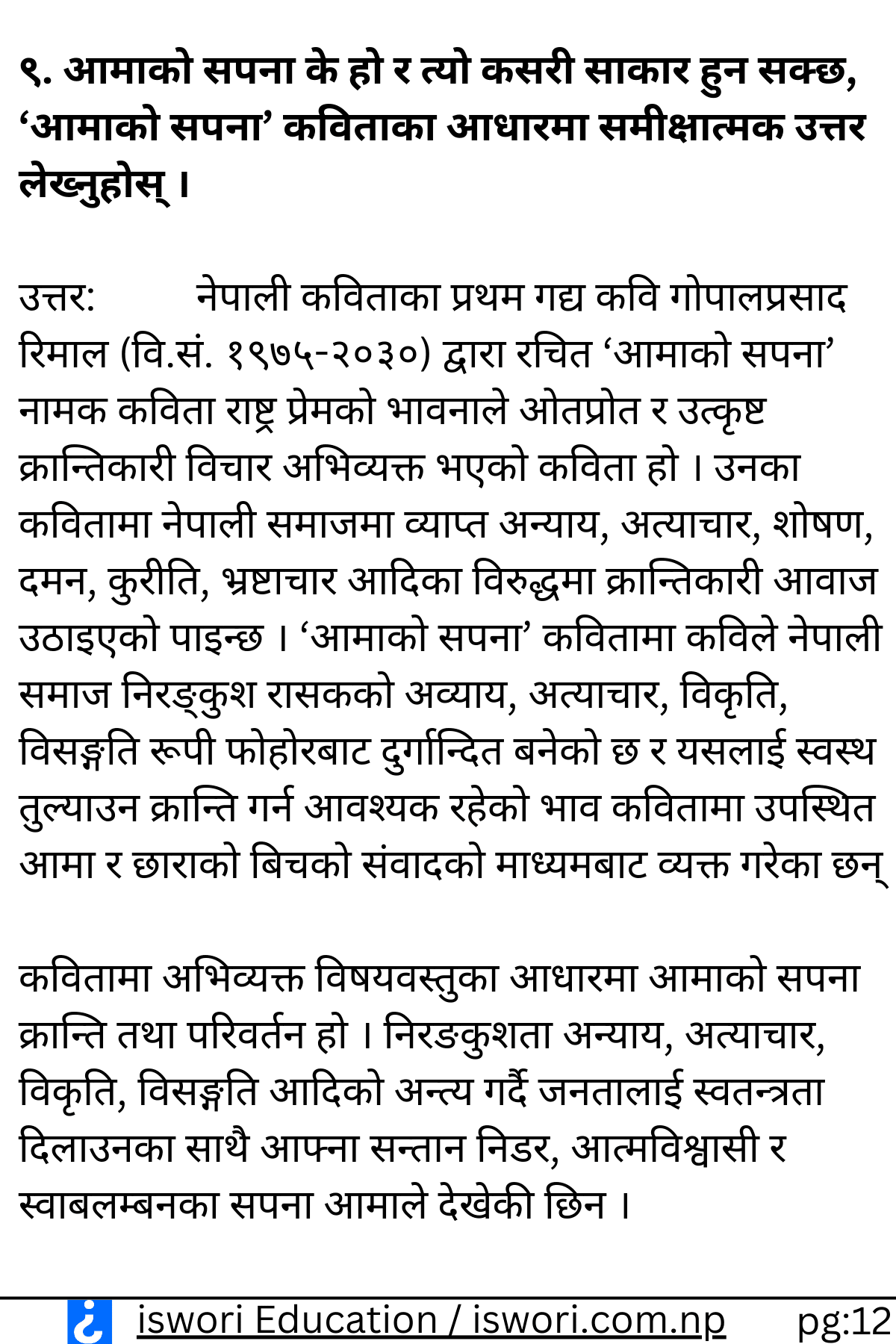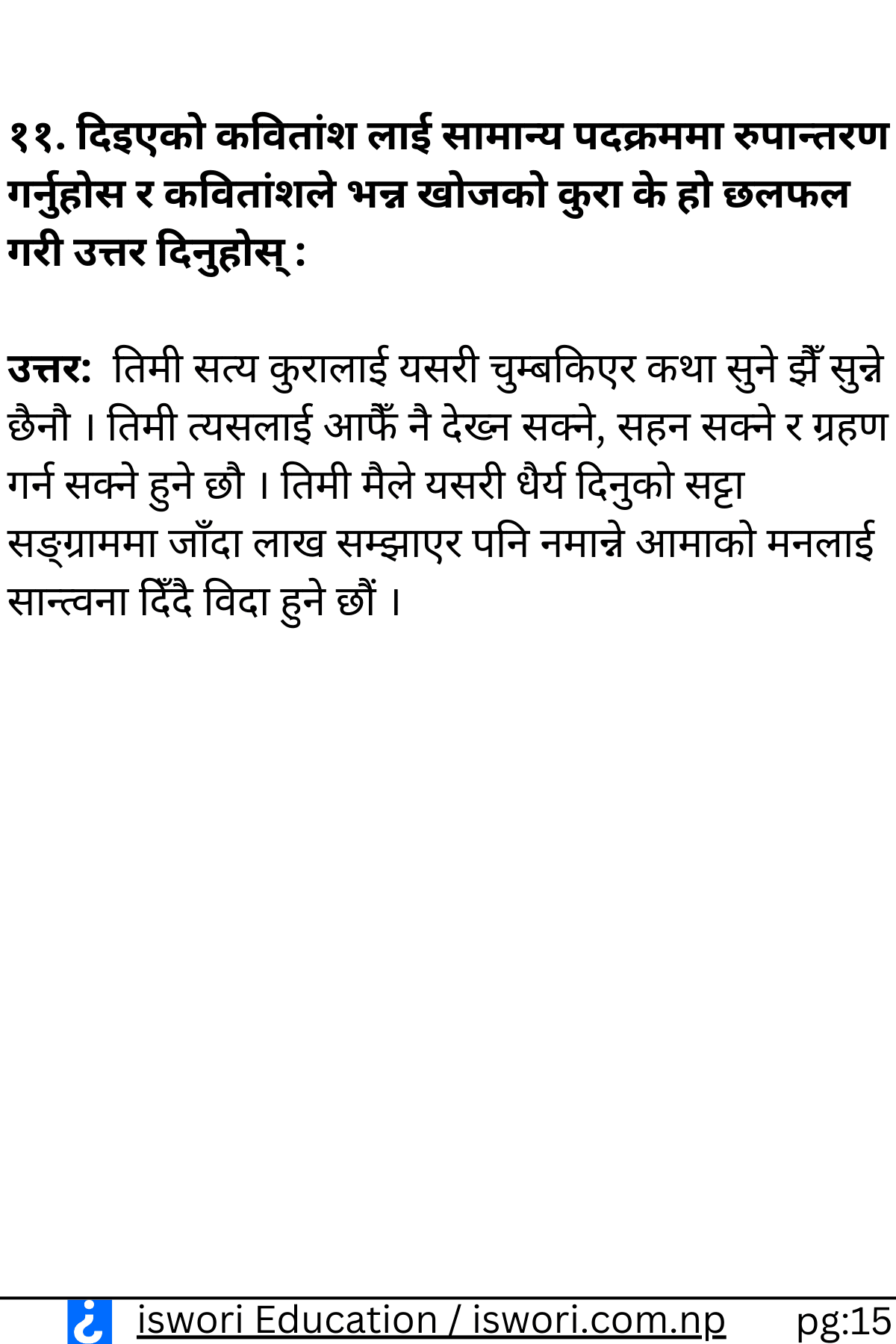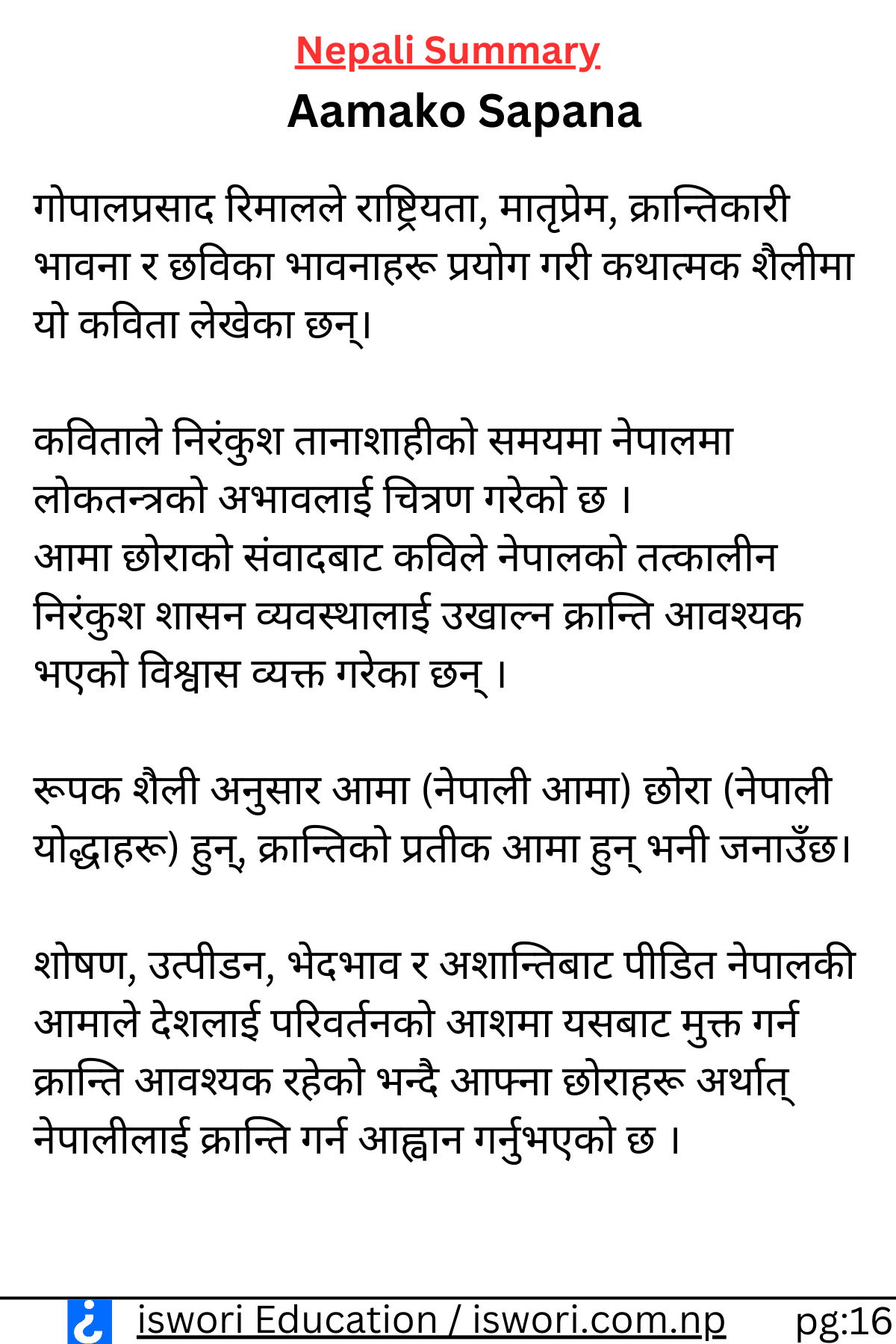Unit 1: Aamako Sapana
AamaKo Sapana is the Nepali same as of the English phrase 'Mother's dream.'
To discuss Aama ko Sapana Summary class 12 Chapter 1, we can derive that the mother represents Nepal country and her son represents Nepalese people.
This poem discusses various expectations that mother (Aama) has for her children. Finally, a detailed summary has been provided.
Let's start with the class 12 Nepali chapter 1 solution.
Aama Ko Sapana Exercise is given as:
Aamako Sapana Poem Summary
English Summary
Aamako Sapan Summary is given as:
Gopal Prasad Rimal wrote the poem in narrative style, using the sentiments of nationalism, motherly love, revolutionary sentiments, and images.
The poem depicts the absence of democracy in Nepal during a period of autocratic dictatorship.
Through the dialogue of mother and son, the poet expresses his belief that a revolution is required to overthrow Nepal's then-autocratic government system.
According to the metaphorical style, the mother (Nepalese mother) is the son (Nepalese warriors), implying that the symbol of revolution is the mother.
The mother of Nepal, who has suffered from exploitation, oppression, discrimination, and unrest, has urged her sons, namely Nepalis, to stage a revolution, stating that a revolution is required to rid the country of it in the hope of bringing about change.
The poem attempts to refer not only to the revolution, but also to future generations with revolutionary potential.
The poem aims to speak about future generations born of Nepal's mother (patriotic warriors) who will fight for Nepal against Rana's and established Peace in Country also.
The Nepalese mother understands that the current generation is incapable of bringing about a revolution, so she expected each son born to her to be capable of bringing about a revolution, but this has yet to happen.
The poet has beautifully expressed the mother's feelings to her current sons in this prose poem.
Nepali Summary
Nepali Summary of Aamako Sapan is given as:
Queries:
- Aama Ko Sapana
- Aamako Sapana Exercise
- Nepali Chapter 1 Exercise Class12
- Aama Ko Sapana Class 12 Summary
- AamaKo Sapana Notes
- AamaKo Sapana Question Answer
Other Chapter Notes
- Chapter 1: Aamako Sapana
- Chapter 2: Birahini Damayanti
- Chapter 3: Ghanaghasya ko ukalo katda
- Chapter 4: Byabasayik Patra
- Chapter 5: Ek chihan
- Chapter 6: Stephen William Hawking
- Chapter 7: Hamilai bolauchan Himchuli
- Chapter 8: Matritwo
- Chapter 9: Gorkhe
- Chapter 10: Nepali Pahichan
- Chapter 11: Sahakari
- Chapter 12: Jiban Marga
Frequently Asked Questions ( FAQs )
Who is the writer of AAMA Ko Sapana?
Aamako Sapana was written by Gopal Prasad Rimal and Later published in Sarada patrika in 2000 B.S.
What is the summary of Aama ko Sapana?
The mother of Nepal, who has suffered from exploitation, oppression, discrimination, and unrest, has urged her sons, namely Nepalis, to stage a revolution, stating that a revolution is required to rid the country of it in the hope of bringing about change.


